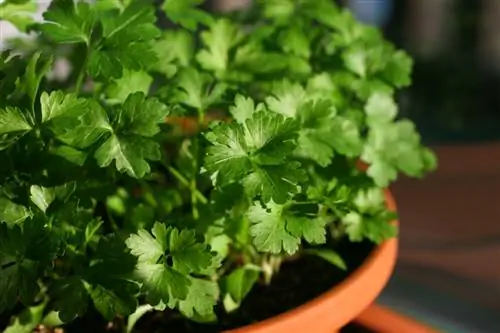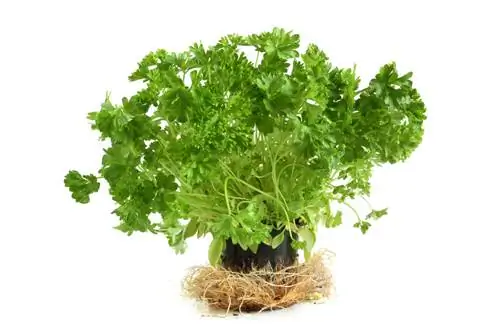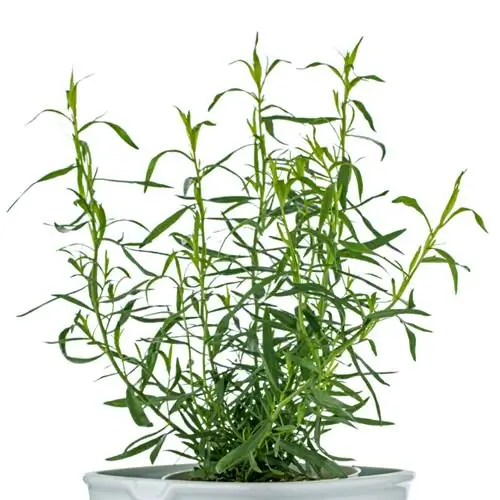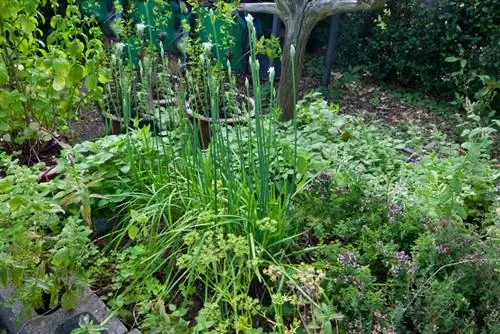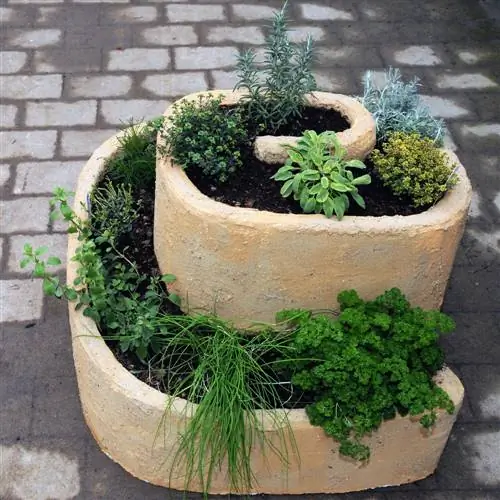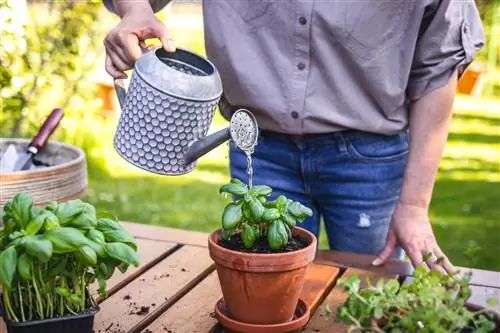- Author admin [email protected].
- Public 2023-12-16 16:46.
- Last modified 2025-06-01 06:02.
The biggest mistake you can make when caring for parsley is incorrect watering. The herb is really a bit squeamish in this regard. The soil shouldn't be too dry, but parsley can't tolerate waterlogging much less.
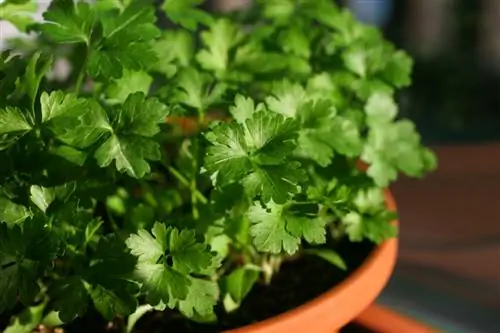
How should parsley be watered correctly?
When watering parsley: water regularly, but in small quantities. Use rainwater, wet the leaves as little as possible and avoid waterlogging by using well-drained soil and appropriate planters with drainage holes.
Water regularly - not too much and not too little
Parsley has no objection to moisture per se; it also grows in slightly moist soil as long as it does not become waterlogged.
Prevent this by loosening the soil well before planting or sowing parsley and eliminating soil compaction. Then the water can drain away easily.
In hot, dry weather you will need to water the parsley frequently, but only in small amounts. It's better to reach for the watering can more often.
Watering parsley on the balcony
Parsley in the pot often dies because it is watered incorrectly. She either gets too little or too much water.
Plant the herb in a pot or balcony box that has sufficiently large holes for water drainage.
Place the pots on a plate. Any water that collects there after watering should be dumped away. This will prevent water from building up and damaging the roots.
Watering with the watering can
You should not spray parsley with the garden hose. The water causes the curly leaves to become very heavy and lie on the ground. This is the best way to water:
- Use rainwater
- Watering with the watering can
- Wet the leaves as little as possible
- Do not use water that is too cold
Tips & Tricks
Experienced gardeners do a thumb test before watering. Once the top soil has dried two to three centimeters, it's time to water.

